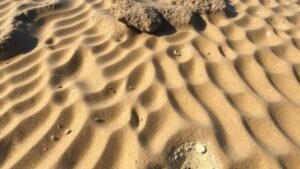Locating Paper Money Hidden Behind Mirrors in Antique Frames
Locating Paper Money Hidden Behind Mirrors in Antique Frames
The practice of hiding paper money or other valuables behind mirrors in antique frames is a fascinating aspect of art and history. This article explores the methods and considerations involved in locating these hidden treasures, as well as the significance behind such actions. Whether you are an antique collector, a curious history enthusiast, or an aspiring treasure hunter, understanding the process can yield both rewarding experiences and valuable finds.
The Historical Context of Hidden Money
Hiding money behind mirrors dates back to various periods when security was less sophisticated than todays methods. During times of economic instability, such as the Great Depression in the 1930s, many individuals resorted to hiding their cash in creative locales within their homes. Mirrors, often seen as decorative rather than functional, provided an ingenious way to conceal valuables from thieves or during home invasions.
Numerous case studies highlight this practice. For example, a documented case from a 1935 estate auction revealed that a family stashed $1,500 (equivalent to over $25,000 today) behind a mirror. Such findings underline the necessity of vigilance and understanding when dealing with antique items.
Identifying the Right Mirrors
Not all antique mirrors are likely homes for hidden money. When searching for these concealed treasures, consider the following criteria to better identify potential candidates:
- Frame age: Focus on mirrors manufactured before the mid-20th century, as many hiding practices diminished due to improvements in security.
- Design style: Ornate Victorian, Edwardian, and Art Deco mirrors often serve as prime candidates due to their elaborate construction.
- Weight and thickness: Heavier mirrors with thick frames might indicate a more significant potential for hiding objects.
Examination Techniques
Once you identify a mirror that fits your criteria, the next step is to carefully examine it for hidden objects. Below are common techniques for conducting this search:
- Visual inspection: Look for any signs of tampering, such as uneven seams or scratches around the edges of the frame. e discrepancies can often hint at hidden compartments.
- Magnification and illumination: Use a flashlight or a magnifying glass to investigate small gaps. Shadows or reflections under certain angles might reveal hidden spaces.
- Sound test: Gently tap various areas of the mirror and listen for variations in sound. A hollow sound may indicate that the object is concealed behind it.
Removing the Mirror Safely
If suspicion of hidden money increases, it may become necessary to remove the mirror from the wall. Follow these steps to ensure safety and prevent damage:
- Gather necessary tools: You will usually need a screwdriver, gloves, and safety goggles for protection.
- Assess the mount: Examine how the mirror is secured to the wall. Identify screws or fasteners before loosening them.
- Lift carefully: Once detached, lift the mirror straight out without jerking. Place it on a soft surface to avoid scratches.
Opening the Frame
After safely removing the mirror, individuals may need to partially disassemble the frame to search for hidden items. Here are key methodologies:
- Back panel inspection: Inspect the back for any screws or fasteners that might conceal a compartment. In some cases, antique frames have been constructed with additional layers for this purpose.
- Frame disassembly: If feasible, carefully unscrew or pry apart the frame to access any concealed spaces. Proceed gently to avoid breaking the frame.
Legal and Ethical Considerations
Before embarking on the hunt for hidden treasures, familiarize yourself with local laws regarding the ownership of found items. In some locations, money found in antique frames may be considered abandoned property, while in others, it may legally belong to the property owner or the estate. Also, it is essential to respect cultural and historical sentiments regarding antiques.
Conclusion
Locating paper money hidden behind mirrors in antique frames involves a blend of historical understanding, careful examination, and practical skills. Whether motivated by curiosity or the prospect of financial gain, this treasure-hunting journey can be both thrilling and rewarding. Always act responsibly and ethically and consult professionals if needed.
In summary:
- Identify suitable mirrors based on age and style.
- Employ examination techniques with precision and care.
- Understand the legalities of hidden finds in your area.
With this knowledge, you are better equipped to explore the intriguing world of hidden paper money in antique mirrors, potentially uncovering not only monetary value but also stories that contribute to our collective past.

